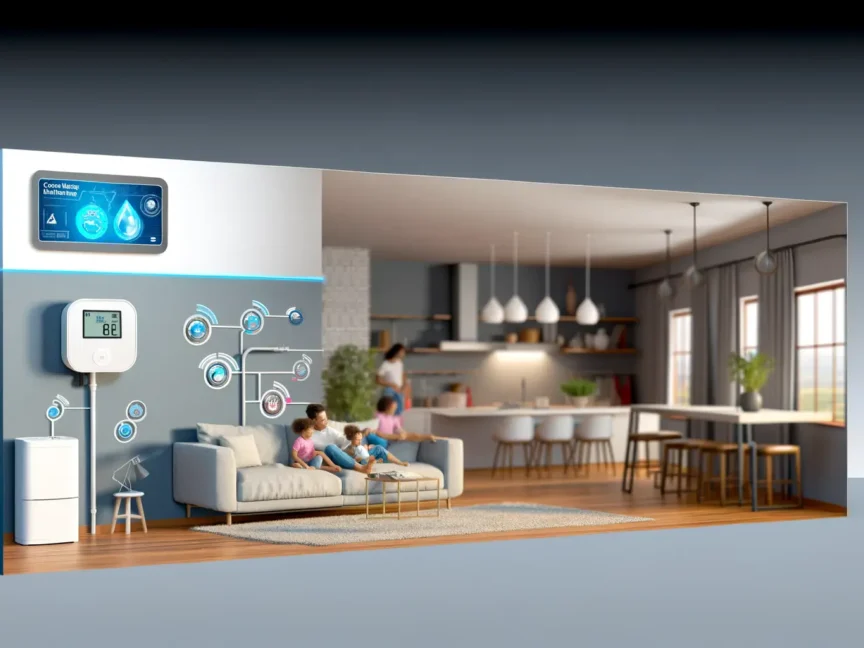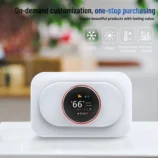Understanding Water Leaks and Early Detection
Water leaks in a home can range from a minor annoyance to a significant catastrophe. Left undetected or unaddressed, they can lead to costly repairs, wasted resources, and extensive damage to a property. Early detection and prompt action are crucial in preventing the adverse effects of water leaks. This section of our blog will explore the common causes of water leaks, how to detect them early, and the initial steps homeowners can take to mitigate damage.
Common Causes of Water Leaks
- Aging Infrastructure: Pipes and plumbing systems deteriorate over time, making older homes more susceptible to leaks.
- High Water Pressure: Excessive pressure can stress pipes and fixtures, leading to failures and leaks.
- Temperature Fluctuations: Extreme changes in temperature can cause pipes to expand and contract, potentially leading to cracks and leaks.
- Corrosion: Chemical reactions with the water supply or the environment can corrode pipes, weakening them and causing leaks.
- Faulty Appliances and Fixtures: Washing machines, dishwashers, and toilets can develop leaks due to wear and tear or improper installation.
Early Detection Techniques
Detecting water leaks early can save homeowners time, money, and prevent potential disaster. Here are some methods to identify leaks promptly:
- Visual Inspections: Regularly check under sinks, around toilets, and appliances for any signs of moisture or water damage.
- Monitor Water Bills: An unexplained increase in water usage may indicate a leak.
- Use Dye Tests: For toilets, adding dye to the tank can reveal leaks if the dye appears in the bowl without flushing.
- Listen for Running Water: Sounds of running water when all taps are off could indicate a hidden leak.
- Moisture Detectors: Installing moisture sensors in prone areas can alert homeowners to leaks.
Immediate Steps to Mitigate Damage
Upon detecting a leak, immediate action can prevent further damage:
- Shut Off the Water: Locate and turn off the main water supply to stop the flow of water.
- Drain the Pipes: Turn on the faucets to drain remaining water in the pipes, reducing the risk of additional leaking.
- Document the Damage: Take photos and notes of the damage for insurance purposes.
- Contact a Professional: For significant leaks, it's crucial to contact a plumber or a leak detection specialist to address the issue properly.
Early detection of water leaks is essential in protecting your home from extensive damage and costly repairs. By understanding the common causes, utilizing detection techniques, and taking swift action, homeowners can effectively mitigate the risks associated with water leaks. In the following sections, we will delve into prevention strategies and how smart home technology can be leveraged to manage and prevent water leaks.
Prevention Strategies for Prevent Water Leaks
Building on the understanding of water leaks and their early detection, this section focuses on effective strategies to prevent leaks from occurring in the first place. Prevention is key to avoiding the inconvenience, cost, and damage associated with water leaks. Implementing the following strategies can help maintain a leak-free home.
Routine Maintenance and Inspections
- Regular Plumbing Inspections: Schedule annual inspections with a certified plumber to check for wear and tear, corrosion, and other potential issues in your plumbing system.
- Appliance Maintenance: Regularly inspect and maintain appliances that use water, such as washing machines, dishwashers, and water heaters, following the manufacturer's guidelines.
- Inspect Faucets and Showerheads: Check for drips or leaks and replace worn-out parts or fixtures as needed.
Upgrading and Replacing Aging Infrastructure
- Pipe Replacement: Consider replacing old or corroded pipes, especially if your home is over 50 years old. Modern materials like PVC or PEX are more resistant to corrosion and can be more durable than old metal piping.
- Install Water-Saving Fixtures: Low-flow toilets, faucets, and showerheads can reduce water pressure stress on your plumbing system and lower the risk of leaks.
Addressing External Factors
- Properly Insulate Pipes: To prevent freezing and subsequent bursting in cold climates, insulate your pipes. This is especially important in unheated areas of your home, such as basements, attics, and garages.
- Maintain Proper Water Pressure: Use a pressure regulator to ensure your home's water pressure is within a safe range, typically between 40-70 psi, to avoid undue stress on your plumbing system.
Landscaping and Outdoor Considerations
- Direct Water Away from the Home: Ensure that your home's landscape slopes away from the foundation to prevent water accumulation that could seep into the basement.
- Gutter Maintenance: Clean and maintain gutters and downspouts to ensure proper drainage away from your home, reducing the risk of foundation leaks.
Smart Water Management
Integrating smart home technology can offer an additional layer of protection against water leaks:
- Smart Water Sensors: Install sensors in areas prone to water leaks, such as bathrooms, kitchens, and laundry rooms. These devices can alert you to the presence of water, allowing for quick action.
- Automated Water Shut-off Systems: Consider installing a system that automatically shuts off your home's water supply when a leak is detected, minimizing potential damage.
Preventing water leaks requires a combination of routine maintenance, timely upgrades, and proactive measures to address both internal and external risk factors. By following these strategies, homeowners can significantly reduce the likelihood of leaks and protect their homes from potential water damage. In the next section, we'll explore how leveraging smart home technologies can further enhance your ability to detect and prevent water leaks, bringing peace of mind and safeguarding your home against water-related issues.
Leveraging Smart Home Technology for Water Leak Detection and Prevention
In the era of smart homes, technology plays a pivotal role in enhancing our ability to detect and prevent water leaks, offering homeowners unprecedented control and peace of mind. This section explores the cutting-edge smart home technologies designed for water leak management and how they can be integrated into your home to protect against water damage effectively.
The Rise of Smart Home Technology in Leak Detection
Smart home technology has revolutionized many aspects of home management, with water leak detection and prevention being no exception. These intelligent systems and devices provide real-time monitoring, instant alerts, and even automatic intervention to minimize the impact of water leaks.
Key Smart Home Devices for Leak Management
- Smart Water Sensors: These compact devices can be placed in areas where leaks are likely to occur, such as under sinks, near water heaters, or around toilets. They detect the presence of water and send instant alerts to your smartphone, enabling swift action.
- Smart Water Shut-off Valves: Installed on your main water supply line, these devices can automatically shut off water to your entire home when a leak is detected by a connected sensor. Some models allow for remote control, letting you manage your home's water supply from anywhere.
- Smart Leak Detection Systems: More comprehensive solutions integrate multiple sensors and shut-off capabilities, providing whole-home protection. These systems often come with smartphone apps for monitoring and control, offering insights into water usage patterns and potential leak locations.
Benefits of Integrating Smart Technology for Leak Detection
- Immediate Detection and Alerts: Receive alerts the moment a leak is detected, significantly reducing the potential for extensive water damage.
- Remote Monitoring and Control: Manage your home's water system from anywhere, giving you peace of mind while you're away.
- Water Conservation: Smart systems can help identify inefficiencies in your water usage, promoting conservation and helping to reduce utility bills.
- Insurance Benefits: Many insurance companies offer discounts for homes equipped with leak detection systems, recognizing the reduced risk of water damage.
Implementing Smart Leak Detection in Your Home
Incorporating smart leak detection into your home involves a few key steps:
- Assess Your Needs: Consider the size of your home and the areas most at risk for leaks to determine the number and types of devices needed.
- Choose Compatible Devices: Ensure that any devices you purchase are compatible with your home's existing smart home system or smartphone.
- Professional Installation: While some devices are designed for DIY installation, consider professional installation for comprehensive systems to ensure optimal performance.
- Regular Testing and Maintenance: Test your devices regularly and keep them updated to ensure they continue to function correctly.
By embracing smart home technology, homeowners can take a proactive stance against water leaks. The combination of early detection, instant alerts, and automatic water shut-off capabilities not only prevents damage but also conserves water and saves money. As we move forward, the integration of these technologies into our homes will become increasingly seamless, offering a smarter, safer, and more sustainable way to manage our most precious resource: water.




